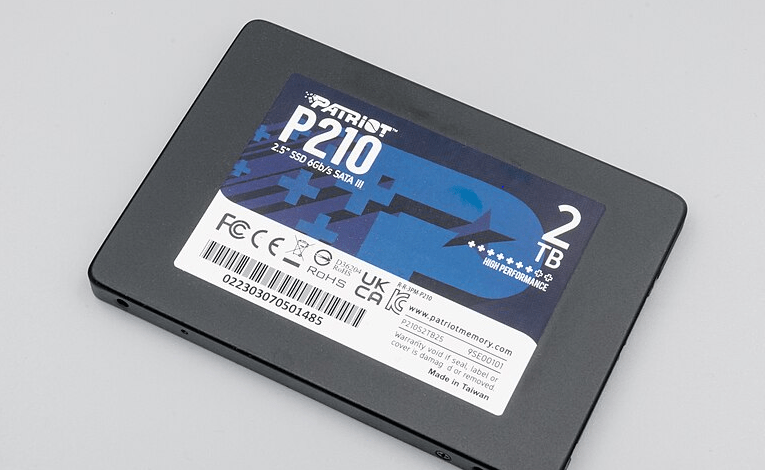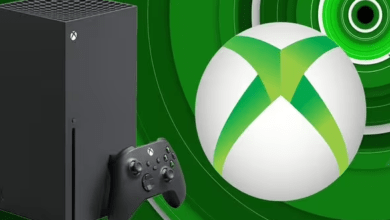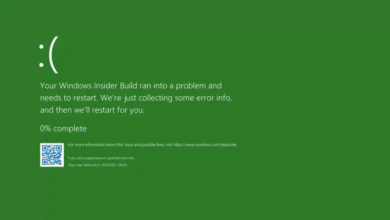
Welcome to the fast-paced world of technology. why are SSDs so expensive where speed and efficiency reign supreme! In recent years, Solid State Drives (SSDs) have emerged as a game-changer in the storage industry. With lightning-fast performance and enhanced reliability, SSDs have become increasingly popular among tech enthusiasts and professionals alike.
But wait a minute…why are SSDs so expensive? If you’ve ever found yourself scratching your head over this question while browsing for new storage options, you’re not alone. In this blog post, we’ll dive deep into the fascinating world of SSDs to uncover. The reasons behind their hefty price tags.
In this article, we’ll explore how SSDs differ from traditional hard drives. Identify the factors contributing to their high cost, discuss their advantages and disadvantages compared. To other storage options, consider alternatives worth considering, make predictions about future pricing trends—and much more! By the end of our journey together, you’ll be equipped with all the knowledge necessary to make an informed decision. When it comes to investing in these cutting-edge storage devices. So let’s shed some light on why SSDs carry such weighty price tags. And discover if they’re truly worth every penny!
How SSDs Differ from Traditional Hard Drives?
When it comes to storage devices, solid-state drives (SSDs) have gained significant popularity over traditional hard drives. But what sets them apart? Let’s explore the key differences between these two options.
First and foremost, SSDs are based on flash memory technology, while traditional hard drives rely on spinning magnetic disks. This fundamental difference in design gives SSDs a major advantage in terms of speed and performance. Unlike hard drives with moving parts that need to physically seek and read data, SSDs can access information instantly.
Furthermore, the durability of SSDs is worth noting. With no mechanical components involved, they are less prone to damage caused by bumps or drops. Additionally, SSDs consume less power compared to their counterparts as they don’t require energy for constant disk rotation.
In terms of size and weight, SSDs also take the lead. They are typically smaller and lighter than traditional hard drives, making them ideal for portable devices such as laptops or tablets where space is limited.
However, one area where traditional hard drives still hold an edge is cost per gigabyte. While prices have been steadily decreasing over time, SSDs remain more expensive than their counterparts when it comes to high-capacity storage options.
Despite this drawback in price-to-storage ratio. The benefits offered by SSDs make them increasingly attractive for various applications including gaming rigs or professional workstations. That demand fast data access speeds.
The key differences between solid-state drives (SSDs) and traditional hard drives lie in their technology – flash memory vs spinning magnetic disks – resulting in superior speed and durability for SSDs.
While cost remains a factor limiting widespread adoption of larger capacity solid-state storage solutions. And as technology advances further, it’s likely we’ll see even greater affordability and wider usage of these innovative storage solutions in the near future. So, if you’re looking for a storage option that offers lightning-fast performance and
Factors Contributing To The High Cost Of SSDs
One of the main reasons why SSDs are so expensive is due to their advanced technology and manufacturing process. Unlike traditional hard drives that use magnetic disks, SSDs rely on flash memory chips which are more complex and costly to produce.
One factor contributing to the high cost of SSDs is the limited supply of NAND flash memory. The demand for this type of memory has been increasing rapidly in recent years with the rise in popularity of smartphones, tablets, and other electronic devices that require storage. This increased demand puts pressure on manufacturers, leading to higher prices.
Another factor driving up the cost is the complexity involved in producing SSDs. The manufacturing process requires highly advanced equipment and specialized knowledge. Additionally, stringent quality control measures have to be implemented at each stage to ensure reliable performance and durability.
Furthermore, research and development (R&D) costs also play a significant role in pricing SSDs higher than traditional hard drives. Manufacturers invest heavily in developing new technologies and improving existing ones to enhance speed, capacity, and overall performance.
Additionally, factors such as economies of scale come into play when determining the price of SSDs. As production volumes increase over time, prices are expected to decrease gradually as manufacturing processes become more efficient.
The high cost of Solid State Drives can be attributed to various factors including limited supply of NAND flash memory. Complexity involved in production, high R&D costs, and economies-of-scale considerations. However, as technology advances further and market demands continue growing, we can expect prices for these cutting-edge storage solutions to gradually become more affordable for consumers. Despite their current expense, that make them worth considering for those seeking faster data access speeds and improved system responsiveness.
The Advantages And Disadvantages Of Using SSDs
When it comes to storage options, solid-state drives (SSDs) have gained popularity in recent years. These high-performance storage devices offer several advantages over traditional hard drives.
One major advantage of SSDs is their speed. Unlike traditional hard drives that rely on mechanical components to read and write data. SSDs use flash memory technology which provides lightning-fast access times. This means that your computer can boot up in seconds and applications can load almost instantly.
Another advantage of using an SSD is durability. Since they don’t have any moving parts, SSDs are more resistant to physical shock and vibration compared to traditional hard drives. This makes them ideal for portable devices such as laptops, where accidental drops or bumps are more likely to occur.
With no spinning disks or moving parts, they require less energy to operate, resulting in longer battery life for laptops and reduced electricity costs for desktop computers.
Despite these advantages, there are some downsides to consider when using an SSD. One main disadvantage is the cost. Compared to traditional hard drives, SSDs tend to be more expensive per unit of storage capacity. However, prices have been steadily decreasing over time as technology improves.
While modern SSDs can last for many years under normal usage conditions, they do have a finite number of writes before they start degrading performance-wise. SSDs provide numerous benefits such as faster speeds, increased durability, and lower power consumption but come at a higher price point compared to traditional HDDs.
Alternatives To SSDs
While solid-state drives (SSDs) have become increasingly popular due to their speed and reliability, they can be quite expensive. If you’re looking for alternatives that won’t break the bank, there are a few options worth considering.
One alternative is traditional hard drives (HDDs). These have been around for decades and offer larger storage capacities at lower prices compared to SSDs. However, HDDs are slower in terms of read/write speeds and can be more susceptible to physical damage.
Another option is hybrid drives, also known as SSHDs. These combine the best of both worlds by incorporating a small amount of flash memory with a larger traditional hard drive. This allows for faster performance while still offering ample storage space.
Cloud storage is another alternative that has gained popularity in recent years. With cloud storage services like Google Drive or Dropbox, you can store your files remotely and access them from any device with an internet connection. While this may not provide the same level of speed as an SSD, it offers convenience and flexibility.
There’s also the option of external hard drives or USB flash drives. These portable storage devices come in various sizes and price ranges, allowing you to choose one that suits your needs without breaking the bank.
while SSDs may be considered expensive compared to other storage options on the market today, there are viable alternatives available depending on your specific needs. Whether it’s opting for traditional HDDs for larger capacity or exploring hybrid drives or cloud storage solutions for a balance between cost and performance – it ultimately comes down to finding what works best for you within your budget constraints!
Predictions For The Future Of SSD Pricing
As technology continues to advance at a rapid pace, it is natural to wonder what the future holds for SSD pricing. Will these high-performance storage devices become more affordable or will their cost remain prohibitively expensive? While no one can predict with absolute certainty, there are several factors that may influence the future price of SSDs.
As demand for SSDs increases and manufacturing processes improve, economies of scale may come into play. This means that as more units are produced, the cost per unit may decrease. Additionally, advancements in technology could lead to more efficient production methods and materials, further reducing costs.
Another factor to consider is competition. As more companies enter the market and develop their own SSD offerings, prices may become more competitive. This healthy competition could drive down prices and make SSDs even more accessible to a wider range of consumers.
Furthermore, research and development efforts focused on improving data storage technologies are ongoing. There is potential for new breakthroughs that could revolutionize the industry, leading to lower production costs and subsequently lower prices for consumers.
It’s worth noting that while traditional hard drives still have their place in certain applications due to their larger capacities at lower costs per gigabyte (GB), there is a growing trend towards using SSDs as primary storage devices across various sectors. As this trend continues and demand rises even further, it’s possible that manufacturers will invest heavily in scaling up production capacity which could help bring down prices over time.
In conclusion (without explicitly stating so), while it is difficult to predict exactly how much less expensive SSDs will become in the future or when significant changes might occur regarding pricing trends; advances in technology along with increased competition should ultimately contribute toward making these high-performance storage devices increasingly affordable option for both businesses and individual users alike
Conclusion
As we’ve explored in this article, the high cost of SSDs can be attributed to several factors. Their advanced technology and production processes, along with the limited supply of certain components, contribute to their expensive price tag. However, despite their steep price.
They provide quicker boot times and improved overall system performance. With no moving parts, they are also less prone to mechanical failure. These benefits make them an attractive choice for users who prioritize speed and reliability.
While the price of SSDs may deter some consumers from investing in these storage devices at present, it is important to note that prices have been steadily decreasing over time. As technology advances and manufacturing costs decrease further, we can expect SSD prices to become more affordable in the future.
In addition to waiting for lower prices on SSDs or seeking out sales and promotions on these devices, there are alternative options available as well. Hybrid drives combine the speed of an SSD with the larger capacity of a traditional hard drive at a more reasonable cost.
While SSDs may currently come with a higher price tag compared to HDDs or other storage solutions such as hybrid drives or cloud storage services; their superior performance characteristics make them worth considering for those who value speed and reliability above all else.
So if you’re willing to invest in top-notch performance and long-term durability for your data storage needs; don’t let the current higher costs deter you from experiencing all that solid-state drives have to offer!




